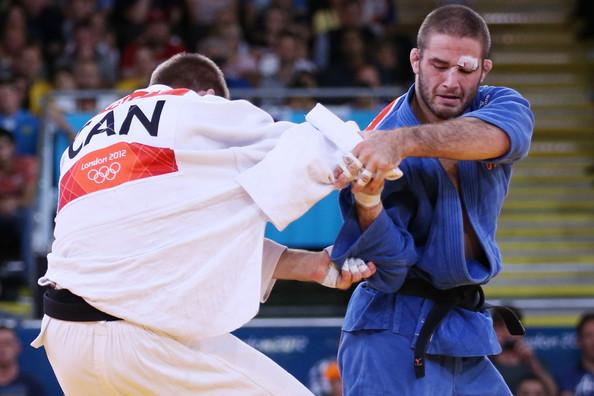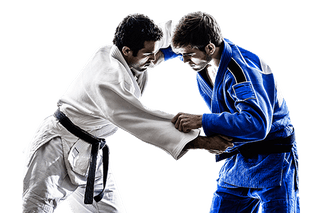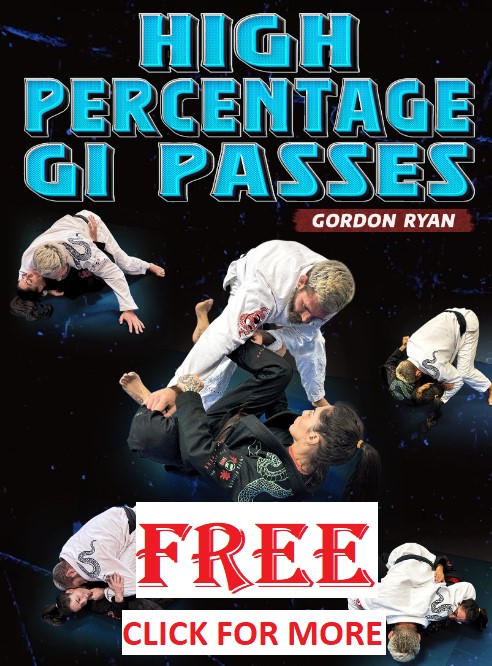
Judo is amazing. It is a really special grappling martial art, requiring a lot of time and dedication. It is not that other arts do not require the same, but Judo is very particular. Most of the action happens standing, which means even a split of a second can be along time. Paired with the heavy use of Gi grips and a need for understanding inertia and gravity, you see why it takes a lifetime to get a true grasp of Judo. Still, Judo is the one best martial art to add to any BJJ grappler’s schedule. Being in the roots of Jiu-Jitsu, Judo is really close to BJJ and has massive amounts of things to still contribute to the Gentle Art. But how do you go about including Judo classes in your BJJ schedule? There is a way that can help you learn Judo while at the same time survive the experience in the long run.
Training Judo is anything but easy. Training Judo and Brazilian Jiu-Jitsu together is nearly impossible. At least if you’re serious about both of them. Recovery time just isn’t there, no matter how much of an athletic specimen someone is. Thre is a smart way to go about it, but the fact remains that you’ll have to choose one of these two grappling martial arts as your main one. That leaves the other to play a supplemental role. And that’s perfectly fine. Since most people reading this are BJJ addicts anyway, let’s see how to integrate Judo classes to Jiu-Jitsu training, rather than the other way around.
Anatomy of Judo Classes
Have you ever taken any Judo classes? IF you have you know they are much different than Jiu-Jitsu ones. In fact, there’s hardly anything alike. With Judo, the focus is on a specific blend of age-old Japanese training modalities and modern ones. This close relation to the art’s Japanese roots makes Judo training a different experience to anything else.

Until such a time you really try Judo classes you can’t know how much timing it requires. There’s a reason why Judokas do crazy amounts of drills that include entries into throws and timing of footsweeps. At all times, the grips get a real bating too. This is just half of what goes on in training, so imagine the pace. The second half is technical with lots of repetitions of throwing/sweeping techniques, or even ground fighting ones from time to time. Sparring, often in a specific manner then takes place. Depending on the Judo club and the aim of training, there might even be added conditioning at the very end.
Training Judo For BJJ The Right Way
So, Judo for BJJ. A subject that has been beaten to death. I’m not even going to go into why Judo is good for JIu-Jitsu. However, what I’d really like to stress is that to train Judo, you need a Judo club. Do not fool yourself that you can really train Judo without going to real Judo Classes in a real Judo school. Yes, you can learn stuff at BJJ, but it will never come close to what you’ll learn in just one Judo class. The same holds true the other way around anyway.
In order to really train Judo that will help your Brazilian JIu-Jitsu, you need to do some smart scheduling. As you can see from above, Judo classes are no joke. Pair that up with rolling several times a week and your conditioning routine and you’ll soon overtrain, regardless of age or how athletic you may be. So, there have to be sacrifices. You can either amend your conditioning routine, given how physically demanding Judo classes are or skip over an open mat or a regular BJJ class. To be smart, you have to make space for specific Judo training, and go into a solid school to get the most out of the experience.
Even then, just jumping into a Judo class won’t do you any good. My recommendation would be to accept that you’re very new at it first, despite your belt level in BJJ. SO, plan ahead – you’ll need a few months of just those pesky timing and entry drills to get comfortable with training the techniques. Only then can you approach the next step – very specific types of Judo classes, geared towards BJJ.
A Very Specific Focus

Secondly, your focus should be on learning techniques that will work against anyone. BJJ guys/girls and wrestlers might not be too hard to surprise with good Judo. However, you also need to learn how to deal with other Judokas, especially those that might have a very strong Judo background. After all, what’s the point in dedicating tie to Judo classes if you’re not going to use what you learn against everyone?
Finally, there’s the goal of not dying in the process. That doesn’t refer to Judo technical training but rather to the sparring and conditioning portions. There are two things you need to watch out for – overtraining and injuries. You can prevent overtraining easily, but injuries are unpredictable. Take no unnecessary risks and you’ll get the most out of Judo for BJJ.
Closing Arguments
The other way around would be using BJJ classes to improve a Judo. This also works perfectly and similar rules apply. BJJ training is not as demanding physically in terms of conditioning and strength training but it does involve more sparring and indifferent fashion. In any case, balancing BJJ and Judo classes is a possibility, you just can’t be the best at both.


![Darce Choke Encyclopedia – Origins, Mechanics and Variations [2024] BJJ, choke, Brabo, BJJ Darce Choke, D'arce Choke, Darce BJJ Choke](https://bjj-world.com/wp-content/uploads/2017/11/JungPoirierLeeYahoo-218x150.jpg)









![Lockdown Quickstart Guide Cameron Mellott DVD Review [2025] Lockdown Quickstart Guide Cameron Mellott DVD Review](https://bjj-world.com/wp-content/uploads/2025/03/lockdown-quickstart-guide-cameron-mellott-dvd-review-218x150.png)
![Standing Leg Entries Alex West DVD Review [2025] Standing Leg Entries Alex West DVD Review](https://bjj-world.com/wp-content/uploads/2025/03/standing-leg-entries-alex-west-dvd-review-218x150.png)

![Best Marcelo Garcia Techniques by Team Marcelo Garcia DVD Review [2025] Best Marcelo Garcia Techniques by Team Marcelo Garcia DVD Review](https://bjj-world.com/wp-content/uploads/2025/02/best-marcelo-garcia-techniques-dvd-review-218x150.png)
![Forging The De La Riva Guard Giancarlo Bodoni DVD Review [2025]](https://bjj-world.com/wp-content/uploads/2025/02/de-la-riva-guard-giancarlo-bodoni-dvd-review-218x150.png)


![Closed Guard Reintroduced Adam Wardzinski DVD Review [2025] Closed Guard Reintroduced Adam Wardzinski DVD Review](https://bjj-world.com/wp-content/uploads/2025/01/closed-guard-reintroduced-adam-wardzinski-dvd-review-100x70.png)

![Effectively Passing The Guard Luke Griffith DVD Review [2025] Effectively Passing The Guard Luke Griffith DVD Review](https://bjj-world.com/wp-content/uploads/2025/01/passing-the-guard-luke-griffith-dvd-review-100x70.png)

![Crush The Guard Vagner Rocha DVD Review [2024] Crush The Guard Vagner Rocha DVD Review](https://bjj-world.com/wp-content/uploads/2024/10/crush-the-guard-vagner-rocha-dvd-review-100x70.png)



![Don’t Stand Up Chris Wojcik DVD Review [2024] Don't Stand Up Chris Wojcik DVD Review](https://bjj-world.com/wp-content/uploads/2024/11/dont-stand-up-chris-wojcik-dvd-review-100x70.png)


![Intro To Hip Mobility for Guard Players Joshua Presley DVD Review [2024] Intro To Hip Mobility for Guard Players Joshua Presley DVD Review](https://bjj-world.com/wp-content/uploads/2024/09/hip-mobility-for-guard-joshua-presley-dvd-review-100x70.png)



![Systematically Attacking The Crucifix Gordon Ryan DVD Review [2024] Systematically Attacking The Crucifix Gordon Ryan DVD Review](https://bjj-world.com/wp-content/uploads/2024/10/systematically-attacking-the-crucifix-gordon-ryan-dvd-review-100x70.png)
![Miko Hytonen Lapel Chokes From Everywhere DVD Review [2024] Miko Hytonen Lapel Chokes From Everywhere DVD Review](https://bjj-world.com/wp-content/uploads/2024/10/miko-hytonen-lapel-chokes-from-everywhere-dvd-review-100x70.png)
![Nicholas Meregali No-Gi System DVD Unpacked: A Detailed Review [2024] Nicholas Meregali No-Gi System DVD Unpacked: A Detailed Review](https://bjj-world.com/wp-content/uploads/2024/09/nicholas-meregali-no-gi-system-dvd-unpacked-review-100x70.png)

![Back Control and Submission Felipe Pena DVD Reveiw [2025] Back Control and Submission Felipe Pena DVD Reveiw](https://bjj-world.com/wp-content/uploads/2025/01/back-control-and-submission-felipe-pena-dvd-reveiw-100x70.png)

![Essential Shin To Shin System Shawn Williams DVD Review [2025] Essential Shin To Shin System Shawn Williams DVD Review](https://bjj-world.com/wp-content/uploads/2025/01/shin-to-shin-system-shawn-williams-dvd-review-100x70.png)

![Jett Thompson Master Ankle and Aoki Lock DVD Review [2024] Jett Thompson Master Ankle and Aoki Lock DVD Review](https://bjj-world.com/wp-content/uploads/2024/09/jett-thompson-master-ankle-and-aoki-lock-dvd-review-100x70.png)

![Crossing and Spinning Steps To Attack Israel Hernandez DVD Review [2024] Crossing and Spinning Steps To Attack Israel Hernandez DVD Review](https://bjj-world.com/wp-content/uploads/2024/09/spinning-steps-to-attack-israel-hernandez-dvd-review-100x70.png)

![Basic Closed Guard Jasmine Rocha DVD Review [2024] Basic Closed Guard Jasmine Rocha DVD Review](https://bjj-world.com/wp-content/uploads/2024/11/basic-closed-guard-jasmine-rocha-dvd-review-100x70.png)